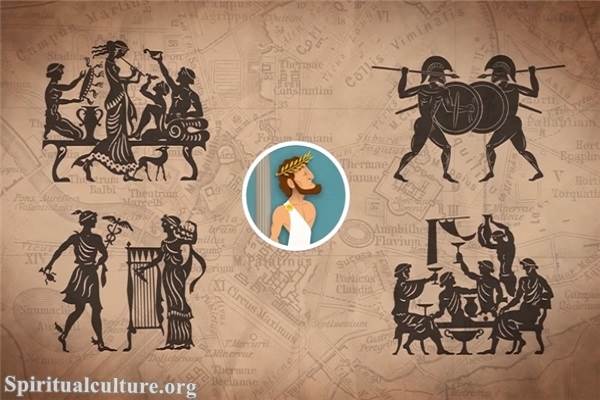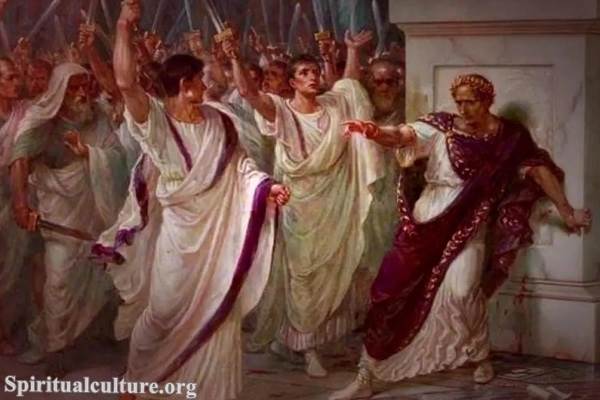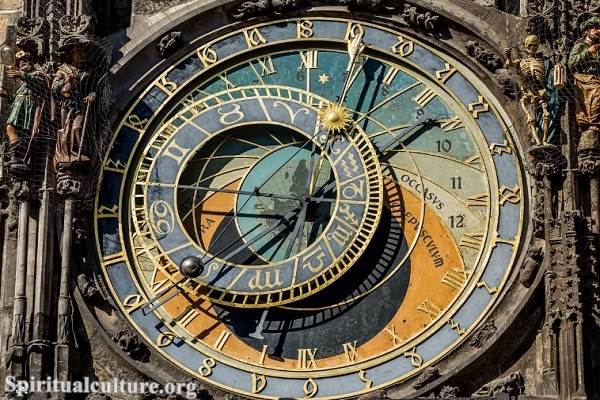Calendars are foundational tools for organizing human activity, enabling societies to sequence events, plan agricultural cycles, and prepare for sacred rituals. The quest for more accurate timekeeping methods has led to the evolution of various calendar systems throughout history. Before the Julian calendar became the standard, ancient Rome employed several calendar systems that profoundly shaped their society.

In this article, Spiritual Culture delves into the calendar used before the Julian calendar, covering the early Roman calendar frameworks, the transition to the Julian calendar, a comparative analysis of various calendar types, and the lasting legacy of early timekeeping methods.
Early Roman Calendar Systems
The concept of timekeeping has evolved significantly since ancient times. The Romans, like many ancient civilizations, relied on a calendar system to govern civic and religious activities. The early Roman calendars were deeply intertwined with the lunar cycles and underwent various reforms to improve their accuracy and functionality.
The Original Roman Calendar
The earliest known calendar of Rome is attributed to Romulus, the legendary founder of the city, around 753 BCE. This original Roman calendar was primarily lunar and consisted of ten months, beginning in March and concluding in December. The months were:
- Martius (31 days): Named after Mars, the god of war, with its arrival marking the start of the military campaign season.
- Aprilis (30 days): The name derives from the Latin verb “aperire,” meaning “to open,” possibly referring to the opening of flowers and trees as spring arrives.
- Maius (31 days): Named after Maia, the goddess of growth and fertility, reflecting the season’s agricultural significance.
- Iunius (30 days): This month is dedicated to Juno, the queen of the gods and protector of the state.
- Quintilis (31 days): Originally the fifth month, it was later renamed Julius in honor of Julius Caesar.
- Sextilis (30 days): The sixth month, which was later renamed Augustus in honor of Emperor Augustus.
- September (30 days): Derived from the Latin word for seven, “septem,” as it was originally the seventh month.
- October (31 days): From the Latin “octo” meaning eight, it was the eighth month in the early calendar.
- November (30 days): From the Latin “novem” meaning nine, it was the ninth month.
- December (30 days): From the Latin “decem,” meaning ten, it was the tenth and final month in the original calendar.
This calendar totaled only 304 days, leaving a gap of approximately 61 days before the new years’ onset in March. Given that the lunar cycle encompasses about 29.5 days, the original Roman calendar was inherently flawed. It could not account for the seasonal changes that were essential for agriculture and other civic duties.
Reforms by Numa Pompilius
The inadequacies of the original calendar prompted the second king of Rome, Numa Pompilius, to initiate substantial reforms around 713 BCE. Numa recognized the need for a more accurate calendar that aligned the lunar months with the solar year. To achieve this, he added two months: Januarius (January) and Februarius (February).
This reformed calendar consisted of the following:
- Januarius (31 days): Positioned at the beginning of the year, January marked the onset of new beginnings and was dedicated to Janus, the god of gates, doors, and transitions.
- Februarius (28 days): February became the last month of the year in Numa’s reform, culminating in 355 days.
The updated structure raised the calendar’s total to 355 days, yet it still failed to synchronize perfectly with the solar year of about 365.25 days. To remedy seasonal drift, Numa instituted a system of intercalation, where an extra month could be inserted—known as Mercedonius—in any given year to account for the discrepancy.
Characteristics of the Lunar Calendar
The pre-Julian Roman calendar’s reliance on lunar cycles brought about several distinct characteristics:
- Lunar Months: The lengths of the months varied between 29 and 30 days, aligned with the observed lunar phases, leading to an average year that was shorter than the solar year.
- Intercalation System: The use of intercalary months allowed priests known as Pontiffs to add an extra month when deemed necessary to maintain alignment with the seasons. This intercalation process, however, became vulnerable to political manipulation.
- Seasonal Misalignments: The reliance on lunar cycles often led to significant seasonal drift, creating challenges for farmers and societal planners. Without a structured system to track this drift, the calendar’s inaccuracy jeopardized agricultural practices and religious observances.
The Transition to the Julian Calendar
By the late 50s BCE, the Roman calendar had become increasingly problematic, prompting reformative action from Julius Caesar. Recognizing that the misalignment of months with the solar year posed significant agricultural and civic challenges, he undertook the monumental task of creating a more reliable calendar.
Julius Caesar’s Calendar Reform
In 46 BCE, Julius Caesar implemented substantial reforms to establish the Julian calendar. This undertaking aimed to standardize the length of the year, realigning it with the solar cycle. Influenced by contemporary mathematical and astronomical knowledge, Caesar sought the expertise of the Greek astronomer Sosigenes of Alexandria, who played a crucial role in shaping the new calendar.
The Julian calendar introduced a year containing 365 days, organized into 12 months, with specific adjustments to accommodate the additional fraction of a day in the solar year. One of the most significant innovations of the Julian calendar was the introduction of the leap year:
- Leap Year Concept: Every four years, an extra day was added to February, transforming the otherwise 28-day month into a 29-day month. This practice was designed to keep the calendar aligned with the solar year over extended periods.
Influence of Sosigenes of Alexandria
Sosigenes of Alexandria was instrumental in devising the new calendar, bringing experience from Greek astronomy and mathematics to ensure that the new structure would significantly improve alignment with the seasons. His recommendations encompassed:
- Solar Calendar Structure: Sosigenes advocated for abandoning lunar month structures entirely and transitioning to a purely solar calendar. This deliberation marked a departure from the complexities of the previous lunar-based systems.
- Uniform Month Lengths: To simplify the calendar, the months were divided into fixed lengths. The following structure was established:
- Januarius (31 days)
- Februarius (28 days, 29 in leap years)
- Martius (31 days)
- Aprilis (30 days)
- Maius (31 days)
- Iunius (30 days)
- Quintilis (31 days)
- Sextilis (30 days)
- September (30 days)
- October (31 days)
- November (30 days)
- December (31 days)
With this structure, the Julian calendar provided a consistent basis for civil governance, agricultural planning, and public life.
Structure of the Julian Calendar
The structure of the Julian calendar marked a significant transition from its predecessors:
- Total Days: The Julian year was fixed at 365 days with a leap year occurring every four years to account for the additional 0.25 days in the solar year.
- Consistency and Predictability: The Julian calendar provided a reliable framework, eliminating confusion regarding months and seasonal alignments, which had plagued the Roman calendar for centuries.
Comparison of Calendar Systems
The transition from the pre-Julian calendar to the Julian calendar highlighted significant differences between lunar and solar calendar systems.
Differences Between Lunar and Solar Calendars
- Basis of Measurement: Lunar calendars are anchored in the lunar phases observed over roughly 29.5 days, whereas solar calendars, including the Julian calendar, follow the solar year of approximately 365.25 days.
- Month Length Variability: In lunar calendars, the length of months varies (typically 29 or 30 days) whereas, in the Julian calendar, the function of months became normalized to fixed lengths (28-31 days).
- Alignment with Seasons: Lunar calendars tend to drift significantly out of synchronization with the seasons, while the Julian calendar maintains consistent seasonal alignment due to its fixed structure.
Accuracy Issues with Pre-Julian Calendars
Before the Julian calendar was introduced, the inaccuracies of the Roman calendar system had various implications:
- Undercutting Agricultural Success: The drifting calendar meant that farmers could not predict planting or harvest times accurately, leading to potential crop failures.
- Political Manipulation: The power to intercalate months afforded to certain priests allowed for political maneuvering, where leaders could influence timing for elections or military campaigns for personal gain.
- Religious Confusion: Rituals tied to specific seasons became misaligned, leading to conflicts in public observance of festivals and potential dissension among the populace.
Impacts of Calendar Misalignment on Society
The inaccuracies and misalignments of the pre-Julian calendar had far-reaching consequences for ancient Roman society:
- Agricultural Practices: Farmers struggled to adapt to seasonal changes, leading to inefficiencies in food production and resulting in periodic famines.
- Civic Disorganization: Events such as elections, festivals, and other civic duties became disorganized, revealing the limitations of the existing calendar system.
- Religious Disputes: The misalignment of religious festivals with their respective seasons undermined the authority of religious leaders, causing divisions within communities.
Historical Context of Calendar Usage
To understand the significance of calendar reforms in terms of governance and cultural practices, it is essential to grasp the historical context surrounding timekeeping in ancient Rome.
Importance of Timekeeping in Ancient Rome
In ancient Rome, the accurate tracking of time was imperative for several reasons, including civic governance, agricultural management, and religious practices:
- Civic Governance: Timely elections and public ifs activities required a reliable calendar, which influenced how citizens engaged with their government decisions and laws.
- Agricultural Management: Seasons dictated crop planting and harvesting schedules, making precise tracking vital for food production and sustenance.
- Religious Practices: Festivals, rites, and sacrifices often correlated with agricultural cycles and celestial events, necessitating a well-structured calendar.
Religious and Agricultural Implications
The Roman calendar played a significant role in shaping religious observances and agricultural practices:
- Seasonal Festivals: Major festivals, such as the Saturnalia, were timed to coincide with agricultural milestones, reflecting the intertwining of civic and religious life. The misalignment of these events with the seasons led to confusion and diminished cultural cohesion.
- Public Rites and Civic Duties: Festivals often involved public rituals that were essential to Rome’s civic identity, including sacrifices and offerings to the gods, which required precise timing to uphold traditional practices.
Legacy of Pre-Julian Calendars
The transition from the pre-Julian to the Julian calendar marked a pivotal shift in timekeeping standards not only within Rome but across subsequent civilizations. This legacy remains relevant today, influencing modern calendar systems.
Lasting Effects on Modern Calendar Systems
The Julian calendar’s structure and principles laid essential groundwork for contemporary timekeeping methods:
- Foundation for the Gregorian Calendar: Introduced by Pope Gregory XIII in 1582, the Gregorian calendar reformed the Julian calendar, correcting inaccuracies that led to discrepancies in seasonal alignment. The Gregorian calendar is the most widely used calendar today and retains many features established by the Julian system.
- Cultural Adaption: Various cultures adopted Julian calendar principles, leading to diverse calendar systems that incorporate lunisolar elements. The Julian reforms impacted not only Roman society but also cultures across Europe and the Mediterranean.
Adoption of the Julian Calendar and Its Impact
The widespread adoption of the Julian calendar created a harmonious framework for civil administration, agriculture, and social events:
- Standardization: By establishing a consistent calendar, the Julian reform minimized confusion across the vast Roman Empire, facilitating governance and communication.
- Global Influence: The Julian calendar’s adoption extended beyond Italy; as the Roman Empire expanded, it disseminated throughout conquered territories, establishing a common calendrical framework among diverse peoples.
Conclusion
The comprehensive exploration of the calendar used before the Julian calendar reveals an intricate history woven through societal, agricultural, and religious practices. The evolution of the calendar from a primitive lunar system to the scientifically structured Julian calendar underscores humanity’s ongoing quest to understand and measure time accurately. By examining the influences and outcomes of earlier calendrical systems, we gain valuable insights into contemporary timekeeping and its profound implications for our organization of daily life.
Understanding the importance of effective timekeeping in ancient Rome not only illuminates the past but also emphasizes the interconnectedness of culture, religion, and agriculture throughout history. The Julian calendar serves as a foundation for our modern approach to time, demonstrating the fundamental role that accurate calendar systems play in shaping civilizations. As we reflect on this progression, it becomes clear that the legacy left by these early calendars informs our interactions with time today, allowing us to appreciate the complexities and significance embedded in how we measure the world around us.




